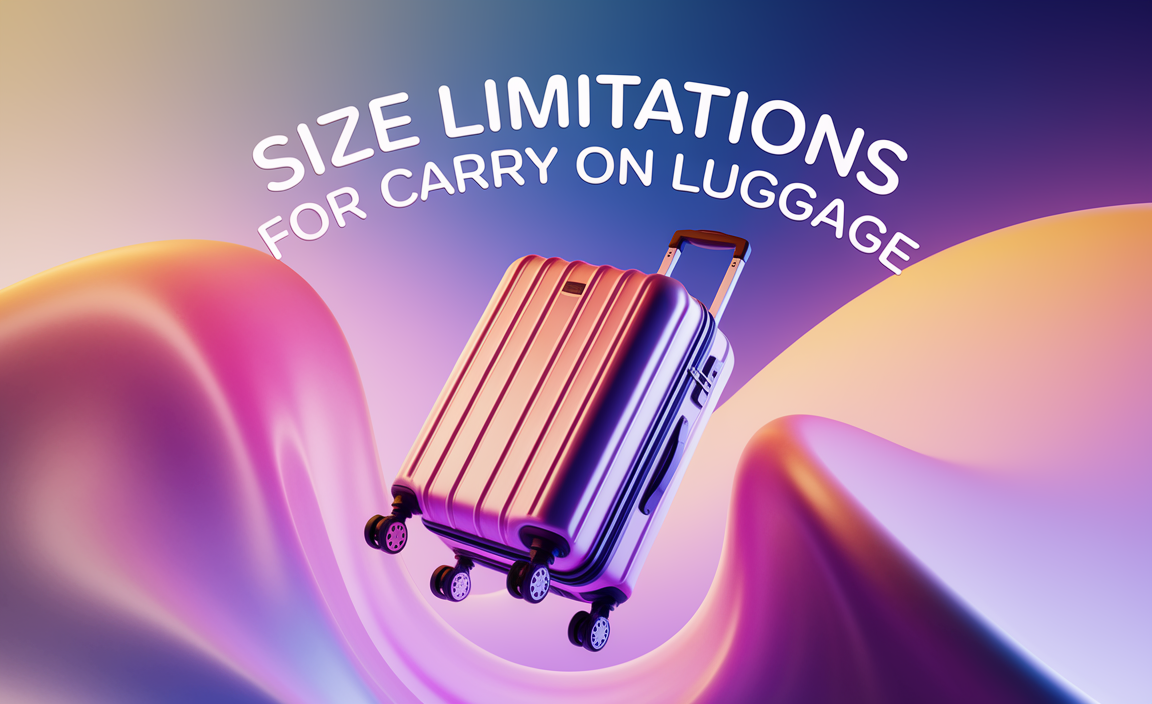Your Azores road trip base guide is here! Discover essential tips for planning a stress-free island adventure, ensuring comfortable travel and exploration with practical advice for every traveler.
Planning an unforgettable road trip through the Azores can feel like a puzzle, especially when you’re not sure where to start. The islands, with their dramatic volcanic landscapes and crystal-clear waters, offer a unique travel experience. But knowing which island to make your “base” and how to navigate between them can be a common point of confusion for first-time visitors. Don’t worry, I’ve got you covered! This guide will break down everything you need to know to set up your perfect Azores adventure, ensuring a smooth journey filled with incredible sights and zero travel stress.
Why an Azores Road Trip Base is Key
The Azores archipelago consists of nine main islands, each with its own distinct charm. Trying to see everything on a single island can limit your experience, and hopping between islands without a plan can eat up precious travel time and budget. Choosing a strategic base or two allows you to explore within a specific region more deeply, making your travel days shorter and your overall experience more relaxed. This approach helps you avoid the feeling of being constantly on the move and instead lets you settle in, soak up the local atmosphere, and truly enjoy each destination. Think of it as creating cozy “home” spots from which to launch your daily adventures.
Understanding the Azores Islands
Before you can pick a base, it’s helpful to know a little about what makes each island special. The Azores are broadly divided into three groups:
Eastern Group: São Miguel and Santa Maria.
Central Group: Terceira, Graciosa, São Jorge, Pico, and Faial.
Western Group: Flores and Corvo.
Each island offers unique attractions, from lush green landscapes and volcanic craters to charming towns and historic sites. Your interests – hiking, whale watching, history, relaxation – will play a big role in deciding which island best suits your needs.
Choosing Your Azores Road Trip Base Island
For most first-time visitors, São Miguel is the most accessible and offers the widest range of attractions and amenities. However, depending on your travel style and what you want to experience, other islands might be better suited.
São Miguel: The Green Island (Often the Best First Base)
São Miguel is the largest and most populated island, often serving as the entry point for international flights owing to its international airport (Ponta Delgada – PDL). It’s a fantastic choice for a base, especially for first-timers, because it offers:
Diverse Landscapes: From the iconic Sete Cidades twin lakes and the geothermal wonders of Furnas to the tea plantations of Gorreana.
Variety of Activities: Hiking trails, hot springs, whale watching tours, surfing, and exploring charming towns.
Good Infrastructure: A wide selection of accommodations, restaurants, car rental agencies, and well-maintained roads.
Accessibility: Easy to navigate with a rental car, and most attractions are within a manageable driving distance from Ponta Delgada or other key towns.
Pros of a São Miguel Base:
Easy to reach and depart from.
Most services and rental car options are readily available.
Incredible variety of sights and activities for all interests.
Well-connected to other islands via inter-island flights.
Cons of a São Miguel Base:
Can be more crowded than smaller islands.
Might feel less “off-the-beaten-path” if that’s what you seek.
Pico: The Mountain Island (For the Adventurous)
If hiking is your priority, especially conquering Portugal’s highest peak, Mount Pico, then Pico is an excellent base. It offers stunning volcanic scenery, unique vineyards (a UNESCO World Heritage site), and a dramatic coastline.
Getting to Pico: You can fly into Pico Airport (PIX) or take a ferry from Faial or São Jorge.
Pros of a Pico Base:
Incredible hiking opportunities, including Mount Pico.
Unique UNESCO-listed vineyards and wine tasting.
Dramatic volcanic landscapes and lava tubes.
Less touristy than São Miguel.
Cons of a Pico Base:
Car rental is essential.
Weather can be unpredictable, especially around the mountain.
Fewer accommodation and dining options compared to São Miguel.
Terceira: The Social Island (Culture and History)
Terceira boasts a rich history, vibrant culture, and beautiful architecture, particularly in its UNESCO World Heritage city, Angra do Heroísmo. It’s great for those interested in history, festivals, and enjoying a more relaxed pace with urban amenities.
Getting to Terceira: Terceira Airport (TER) receives international flights, making it another good entry point.
Pros of a Terceira Base:
Rich history and well-preserved architecture in Angra do Heroísmo.
Lively cultural scene and festivals.
Interesting volcanic caves and unique landscapes.
Good balance of accessibility and a distinct island feel.
Cons of a Terceira Base:
Can be damp and foggy during certain times of the year.
Fewer extreme adventure activities compared to Pico or São Miguel.
Faial: The Blue Island (Whale Watching Hub)
Known for its marina in Horta, a popular stop for transatlantic sailors, Faial is a hub for whale and dolphin watching. It also features the striking Capelinhos volcano, the site of a 1957 eruption that dramatically expanded the island.
Getting to Faial: Fly into Faial Airport (HOR) or take a short ferry from Pico.
Pros of a Faial Base:
Premier whale and dolphin watching opportunities.
Fascinating volcanic landscapes (Capelinhos).
Charming marina town of Horta.
Excellent ferry connections to Pico and São Jorge.
Cons of a Faial Base:
Can be windy.
Smaller island, so fewer accommodation choices.
Planning Your Itinerary: One Base vs. Island Hopping
The decision to use a single base or split your time between two islands depends on the length of your trip and your travel pace.
Option 1: The Single Base Strategy
Ideal For: Shorter trips (5-7 days), travelers who prefer to unpack once, and those who want a relaxed pace.
How It Works: Choose one island (most likely São Miguel for ease) and use it as your home base. You’ll take day trips around the island. If you want to visit another island, you can take a day trip via inter-island flight or ferry and return by evening, although this can be rushed.
Example: Spend 7 days based in Ponta Delgada, São Miguel, exploring all its wonders without changing hotels.
Option 2: The Two-Base Strategy
Ideal For: Longer trips (8-14+ days), travelers who want to experience more than one distinct island vibe, and those comfortable with changing accommodations.
How It Works: Choose two islands that offer different experiences and are well-connected by ferry or short flights. You could spend several days on one island, then travel to another to establish your second base.
Example: Spend 5 days in Ponta Delgada (São Miguel) and then take a short flight or ferry to Terceira and spend 4 days based in Angra do Heroísmo.
Table: Inter-Island Travel Options
| From Island | To Island | Travel Method | Duration (Approx.) | Notes |
| :————- | :———– | :—————- | :—————– | :————————————————- |
| São Miguel | Terceira | Flight | 40 mins | SATA Air Açores is primary operator. |
| São Miguel | Pico | Flight | 50 mins | Service may be less frequent; check schedules. |
| São Miguel | Faial | Flight | 50 mins | Similar to Pico flights. |
| Pico | Faial | Ferry | 30-45 mins | Atlânticoline operates this route. |
| Pico | São Jorge | Ferry | 1-1.5 hours | Connects to Velas on São Jorge. |
| Faial | Terceira | Flight | 30 mins | Efficient connection. |
| Faial | São Jorge | Ferry | 1 hour | Connects to Velas. |
Note: Ferry schedules are seasonal and weather-dependent. Always check the Atlânticoline website for the most up-to-date information.
Essential Tips for Your Azores Road Trip Base
Once you’ve decided on your base (or bases), here are some practical tips to make your journey comfortable and stress-free.
1. Renting a Car is Non-Negotiable
For true freedom and exploration, a rental car is essential on almost every Azorean island. The public transport system is limited, and attractions are often spread out.
Book in Advance: Especially during peak season (summer), car availability can be tight, and prices soar.
Choose Wisely: For São Miguel, a smaller car is often more practical for navigating narrow village roads and finding parking. For islands with steeper terrain like Pico or São Jorge, a car with a bit more power might be beneficial.
Insurance: Always opt for full coverage insurance to avoid any unexpected costs.
GPS: Ensure your rental comes with GPS or use your smartphone with offline maps.
2. Accommodation Considerations
Your choice of accommodation can significantly impact your Azores road trip experience.
Location, Location, Location:
Ponta Delgada (São Miguel): Ideal if you want easy access to restaurants, shops, and tour departures, and don’t mind a city base.
Furnas (São Miguel): Perfect for a quieter, nature-focused experience, surrounded by lush vegetation and hot springs.
Vila Franca do Campo (São Miguel): A good middle ground, central on the south coast with its own charm and a beautiful islet offshore.
Main Towns on Other Islands: Angra do Heroísmo (Terceira), Horta (Faial), Madalena (Pico) offer convenience and local atmosphere.
Types of Stays:
Hotels: Offer full services and amenities.
Guesthouses (Alojamento Local): Often family-run, providing a more personal touch and local insights.
Villas/Apartments: Great for families or longer stays, offering more space and kitchen facilities. This can be particularly helpful for managing dietary needs or for parents traveling with children.
3. Packing for Comfort and Preparedness
The Azores weather can change rapidly, so packing smart is key. Layers are your best friend!
What to Pack:
Waterproof and Windproof Jacket: Absolutely essential. Even on sunny days, a sudden shower or wind can catch you off guard.
Comfortable Walking Shoes/Hiking Boots: You’ll be doing a lot of walking, often on uneven terrain.
Sturdy Sandals: Good for warmer days and relaxing.
Swimwear: For thermal pools, ocean dips, and natural swimming spots.
Quick-Dry Towel: Handy for spontaneous dips or if your accommodation’s towels aren’t sufficient.
Layers of Clothing: T-shirts, long-sleeved shirts, fleece or sweaters.
Sun Protection: Sunscreen, hat, sunglasses – the sun can be surprisingly strong.
Reusable Water Bottle: Stay hydrated and reduce plastic waste. Water fountains are common.
Camera: To capture the breathtaking scenery!
Portable Power Bank: For charging devices on the go.
Travel-Sized Toiletries: Always a good idea.
Basic First-Aid Kit: Including any personal medications.
For Parents with Children: For those traveling with little ones, consider packing child-friendly snacks and travel-sized entertainment. If you need to manage continence discreetly and comfortably, adult or child diapers can offer peace of mind for longer excursions or unexpected delays. Brands like Depend or specific child brands offer discreet, absorbent options that can make a big difference in ensuring everyone enjoys the trip without worry. Ensure you pack enough for your trip, as availability might be limited on smaller islands.
4. Navigating Azorean Roads
The roads in the Azores are generally well-maintained, but they can be narrow and winding, especially in rural areas.
Drive Safely: Adhere to speed limits. Locals can be speedy, but it’s best to drive at your own pace.
Hazards: Watch out for sudden turns, blind corners, and livestock (cows and sheep) that might wander onto the road.
Parking: In popular spots, parking can be challenging. Be patient and follow signage.
Fuel: Ensure you keep your rental car’s fuel tank topped up, especially when exploring more remote areas, as gas stations can be few and far between. Check the Azores government’s transportation resources for broader context on island mobility.
5. Embrace Local Culture and Food
Your road trip is also a culinary journey!
Try the Local Cuisine:
Cozido das Furnas: A stew cooked underground by volcanic heat (São Miguel).
Fresh Seafood: Abundant and delicious.
Azorean Cheese: Famous for its robust flavor.
Pineapples: Grown locally in greenhouses, especially in São Miguel.
Bolo Lêvedo: A slightly sweet, fluffy muffin-like bread.
Enjoy Local Cafes and Restaurants: Don’t shy away from smaller, family-run establishments. They often offer the most authentic experiences.
Frequently Asked Questions About Azores Road Trip Bases
Q1: Is it necessary to rent a car for an Azores road trip?
A1: Absolutely. While some islands have limited public transport, a rental car is the most practical way to explore the diverse attractions spread across each island at your own pace.
Q2: Which island is the best for a first-time visitor’s base?
A2: São Miguel is widely recommended for first-timers. It’s the largest island, offers the most variety of landscapes and activities, and has the best infrastructure and accessibility, including the main international airport.
Q3: Can I visit multiple islands on a single road trip?
A3: Yes, you can. For trips of a week or more, consider using two bases or opting for day trips via inter-island flights or ferries. For shorter trips, sticking to one island as a base is usually more relaxing.
Q4: What kind of car should I rent in the Azores?
A4: A small to medium-sized car is usually best, especially on São Miguel, for easier navigation of narrow roads and parking in towns. If you plan to drive on rougher terrain or tackle steep, winding roads on islands like Pico, a car with a bit more power might be advantageous.
Q5: How difficult are the roads to drive in the Azores?
A5: The main roads are generally well-maintained. However, they can be narrow, winding, and have steep inclines. Drive cautiously, be aware of blind corners, and watch for animals on the road.
Q6: What is the best time of year for an Azores road trip?
A6: The shoulder seasons (April-May and September-October) offer pleasant weather, fewer crowds, and slightly lower prices. Summer (June-August) is popular for warm weather and longer daylight hours but is busier. The weather is variable year-round, so be prepared for sun, rain, and wind no matter when you visit.
Q7: Are there any specific considerations for traveling with children in the Azores?
A7: The Azores are very family-friendly. Opting for a rental car is crucial for flexibility. When choosing accommodation, consider apartments or villas with kitchens for easier meal preparation. Packing familiar snacks and essential items, including discreet continence products if required for children or adults, will ensure comfort and reduce stress during your explorations.
Planning Your Island-Hopping Logistics
If you decide to visit more than one island, here’s how to manage the logistics:
Ferries: Atlânticoline is the main ferry operator connecting most islands, particularly in the central group. Ferries are a scenic way to travel and more budget-friendly than flights but are subject to weather conditions and have less frequent schedules than flights.
Flights: SATA Air Açores operates regular flights between the islands. Flights are faster and more reliable but more expensive. Booking flights well in advance is recommended, especially for popular routes.
Car on Ferries: You can often take your rental car on the ferry if you’re island hopping within the same rental agreement. However, check with your rental company and the ferry operator for specific rules and fees. If you’re flying between islands, you’ll need to rent a new car on each island.
Conclusion
Embarking on an Azores road trip from a well-chosen base island is a fantastic way to experience the magic of this archipelago. Whether you’re drawn to São Miguel’s lush landscapes, Pico’s majestic mountain, or Terceira’s rich history, having a plan and knowing where to establish your comfortable, reliable base will allow you to explore with confidence. Pack wisely, drive safely, and get ready for an adventure that promises breathtaking views, unique experiences, and memories to last a lifetime. Your perfect Azorean journey awaits!






